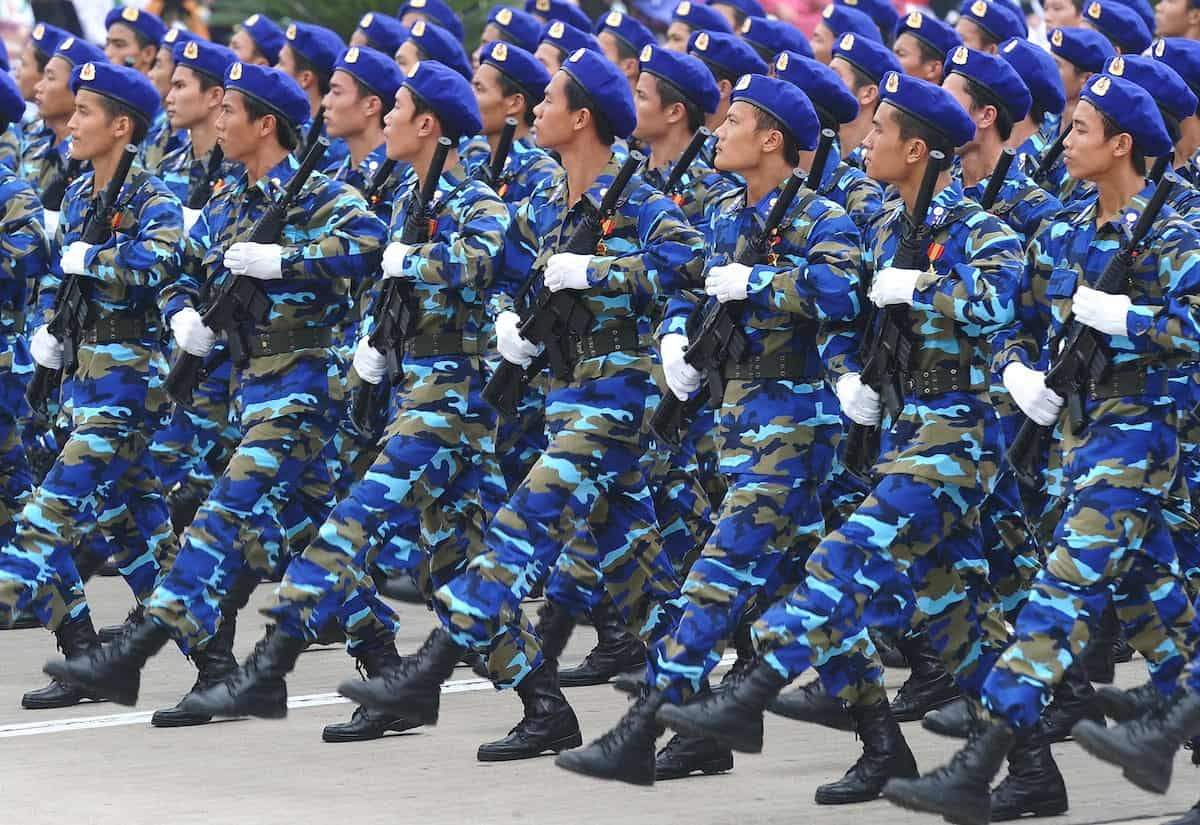Vietnam, Philippines fortify South China Sea bases
Wednesday, February 24, 2021
Categories: ASCF News Emerging Threats National Preparedness

The Joe Biden administration’s increasingly tough stance against China, including multiple naval deployments to the South China Sea and Taiwan Strait in recent weeks, has emboldened smaller regional powers to stand up to the Asian powerhouse.
China’s two main rivals in the South China Sea, the Philippines and Vietnam, have vowed to fortify their positions in the disputed waters, including through expanded naval patrols as well as tighter security cooperation with the United States and like-minded powers.
There are growing indications that Beijing is intent on fortifying its positions in adjacent waters in a major foreign policy test for the Biden administration as well as China’s immediate neighbors in Southeast Asia.
The Covid-19 pandemic, which hit regional economies and heavily disrupted Beijing’s rivals’ military operations last year, provided a golden opportunity for China to literally build facts on the ground.
China’s expansion
According to a new report by the US Naval War College, China has built arguably the world’s largest city by area in the northern portions of the South China Sea. Founded a decade ago, Sansha City now covers 800,000 square miles within Beijing’s notorious nine-dashed-line.
This makes the artificially created city, which is centered on Woody Island in the Paracels, as much as 1,700 times the size of New York City.
From being a “once a remote outpost,” Sansha City and Woody Island “now boast expanded port infrastructure, seawater desalination and sewage treatment facilities, new public housing, a functioning judicial system, 5G network coverage, a school and regular charter flights to and from the mainland,” the report says.
Amid a construction frenzy, with massive civilian and military facilities extending from Woody Island in the Paracels to Fiery Cross in the Spratlys, China announced at the height of the Covid-19 pandemic the creation of two new administrative regions to enforce China’s sovereign claims across much of the South China Sea.
And only weeks into Biden’s presidency, China upped the ante by passing a controversial maritime law, which effectively encourages the country’s expanding coast guard and paramilitary forces to use violent means to intimidate rivals and consolidate Beijing’s sweeping claims in the area.
In response to China’s rapid militarization of the disputed areas, smaller rivals are doubling down on their own efforts to safeguard their maritime interests. A recent report by the Washington-based Asia Maritime Transparency Initiative (AMTI) shows that Vietnam, which has claims in both the Paracels and the Spratlys, is rapidly fortifying its position, including the installation of air and coastal defense systems across dozens of Vietnamese-occupied islands in the Spratlys.
Vietnam upgrades defenses
Vietnam’s counter-militarization is on a far smaller scale than China’s, but it places the Southeast Asian nation in a position to “strike Chinese facilities” if necessary, according to the AMTI. The most significant defensive upgrades are in West Reef and Sin Cowe Island, which “follow established patterns seen at other Vietnamese outposts in the Spratlys.”
“The coastal defense installations – concrete emplacements often connected to a bunker – are ubiquitous at Vietnam’s larger outposts,” the report said.
Since 2019, Vietnam has built civilian and military facilities, including signal towers, on the 28.3 hectares of land at West Reef, which were reclaimed and expanded from 2013 to 2016.
Hanoi has also reportedly deployed Precision-Guided Rocket Artillery and other advanced military equipment to the area, as the country prepares for contingencies, including a potential imposition of a Chinese Air Defense Identification Zone across the South China Sea.
Back in 1988, the two rivals came to blows over disputed islands in the Spratlys, claiming dozens of casualties among Vietnamese troops. Hanoi is making sure it will be in a far better position should similar skirmishes take place amid intensifying maritime disputes with Beijing.
Meanwhile the Philippines, a US treaty ally and another major claimant state, has made it clear that it won’t be intimidated by China’s latest moves.
Lieutenant-General Cirilito Sobejana, the Armed Forces of the Philippines’ new Chief of Staff, announced he had previously ordered the deployment of more navy ships to the disputed waters in order to protect Filipino fishermen against potential violence at the hands of the Chinese coast guard and paramilitary forces.
Philippines looks to US
In 2019, a suspected Chinese militia vessel almost killed 22 Filipino fishermen after ramming the latter’s fishing boat in the energy-rich Reed Bank area, which falls within the Philippines’ exclusive zone as well as China’s nine-dash-line.
The Philippine top brass, as well as senior defense and foreign affairs officials, are strongly lobbying for the full restoration of the Philippine-US Visiting Forces Agreement (VFA), which was temporarily suspended by President Rodrigo Duterte amid human rights disputes with the US Congress.
Manila hopes to secure expanded military assistance from the Biden administration amid ongoing negotiations to reverse Duterte’s earlier abrogation of the key defense agreement, which allows for large-scale entry of American troops for annual joint exercises with their Filipino counterparts, including in the South China Sea.
In response to growing worries over China’s new coast guard law, which green-lights the use of force as a means of enforcing Beijing’s sweeping claims, Major-General Edgard Arevalo, spokesman for the Armed Forces of the Philippines, reiterated on February 20 the country’s preparedness to defend its interests in adjacent waters.
“We will pursue our constitutional mandate and consistently assert our sovereignty in the West Philippine Sea,” said the military spokesman, reminding Filipino lawmakers “the protection of our territory and the upholding of the interest of our people is our primary interest.”
Photo: Vietnam's maritime policemen march in Hanoi. Hanoi has been bolstering its defenses in areas in the South China Sea contested with China. Photo: AFP/Hoang Dinh Nam
Link: Vietnam, Philippines fortify South China Sea bases - Asia Times











